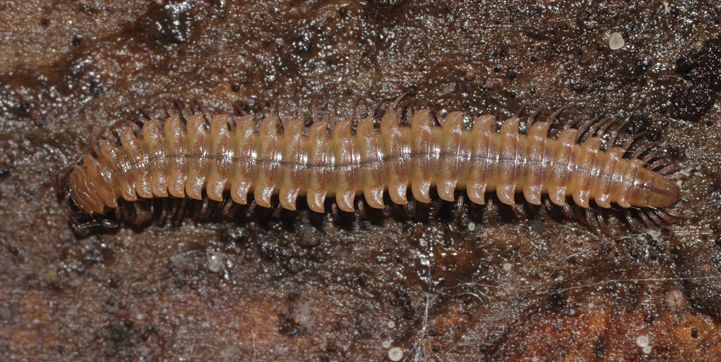|
Trichopetalidae
Trichopetalidae is a family of millipedes in the order Chordeumatida. Adult millipedes in this family have 28 or 30 segments (counting the collum as the first segment and the telson The telson () is the posterior-most division of the body of an arthropod. Depending on the definition, the telson is either considered to be the final segment of the arthropod body, or an additional division that is not a true segment on accou ... as the last). There are about 5 genera and at least 30 described species in Trichopetalidae. Genera * '' Causeyella'' * '' Mexiterpes'' Causey, 1963 * '' Scoterpes'' Cope, 1872 * '' Trichopetalum'' Harger, 1872 * '' Trigenotyla'' Causey, 1951 References Further reading * * * * Chordeumatida Millipede families {{myriapoda-stub ... [...More Info...] [...Related Items...] OR: [Wikipedia] [Google] [Baidu] |
Trichopetalum (millipede)
''Trichopetalum'' is a genus of chordeumatidan millipedes known from eastern North America. Species *'' Trichopetalum appropinquo'' *'' Trichopetalum cornutum'' *'' Trichopetalum dux'' *''Trichopetalum flavidum'' *'' Trichopetalum glomeratum'' *'' Trichopetalum krekeleri'' *''Trichopetalum lunatum'' *''Trichopetalum montis'' *''Trichopetalum packardi'' *''Trichopetalum quadratum'' *''Trichopetalum stannardi'' *''Trichopetalum subterraneum'' *''Trichopetalum syntheticum'' *''Trichopetalum uncum'' *''Trichopetalum weyeriensis'' *''Trichopetalum whitei ''Trichopetalum whitei'', common name Luray Caverns blind cave millipede, is a rare troglobitic (obligate cavernicolous) millipede of the upper Potomac River drainage in four Virginia counties and three West Virginia counties. It has been recorde ...'' References Chordeumatida Millipedes of North America Millipede genera {{Myriapoda-stub ... [...More Info...] [...Related Items...] OR: [Wikipedia] [Google] [Baidu] |
Chordeumatida
Chordeumatida (from the Greek word for "sausage") is a large order of millipedes containing some 1200 species with a nearly worldwide distribution. Also known as "sausage millipedes," they possess around 30 body segments behind the head (including the telson) as adults and reach about in length. Description Chordeumatidans are relatively short-bodied, with only 26 to 32 body segments (including the telson) behind the head. They range in length from . A key feature is the presence of 6 large bristles (setae) on the dorsal surface of each body segment. The first segment ( collum) is relatively narrow, giving the appearance of a distinct "neck" in many species. The body tapers towards the rear, and the rearmost tip (telson) contains silk-producing organs (spinnerets). A dorsal groove runs down the length of the body, and some species possess paranota, lateral extensions of the exoskeleton. Paranota are also found in some other millipedes, notably Polydesmida, from which Chordeumat ... [...More Info...] [...Related Items...] OR: [Wikipedia] [Google] [Baidu] |
Causeyella
''Causeyella'', is a genus of millipede Millipedes are a group of arthropods that are characterised by having two pairs of jointed legs on most body segments; they are known scientifically as the class Diplopoda, the name derived from this feature. Each double-legged segment is a resu ...s comprising three species: *'' Causeyella causeyae'' Shear, 2003 *'' Causeyella dendropus'' (Loomis, 1939) *'' Causeyella youngsteadtorum'' Shear, 2003 References Chordeumatida Cave millipedes {{Myriapoda-stub ... [...More Info...] [...Related Items...] OR: [Wikipedia] [Google] [Baidu] |
Telson
The telson () is the posterior-most division of the body of an arthropod. Depending on the definition, the telson is either considered to be the final segment of the arthropod body, or an additional division that is not a true segment on account of not arising in the embryo from teloblast areas as other segments. It never carries any appendages, but a forked "tail" called the caudal furca may be present. The shape and composition of the telson differs between arthropod groups. Crustaceans In lobsters, shrimp and other decapods, the telson, along with the uropods, forms the tail fan. This is used as a paddle in the caridoid escape reaction ("lobstering"), whereby an alarmed animal rapidly flexes its tail, causing it to dart backwards. Krill can reach speeds of over 60 cm per second by this means. The trigger time to optical stimulus is, in spite of the low temperatures, only 55 milliseconds. In the Isopoda and Tanaidacea (superorder Peracarida), the last abdominal b ... [...More Info...] [...Related Items...] OR: [Wikipedia] [Google] [Baidu] |

